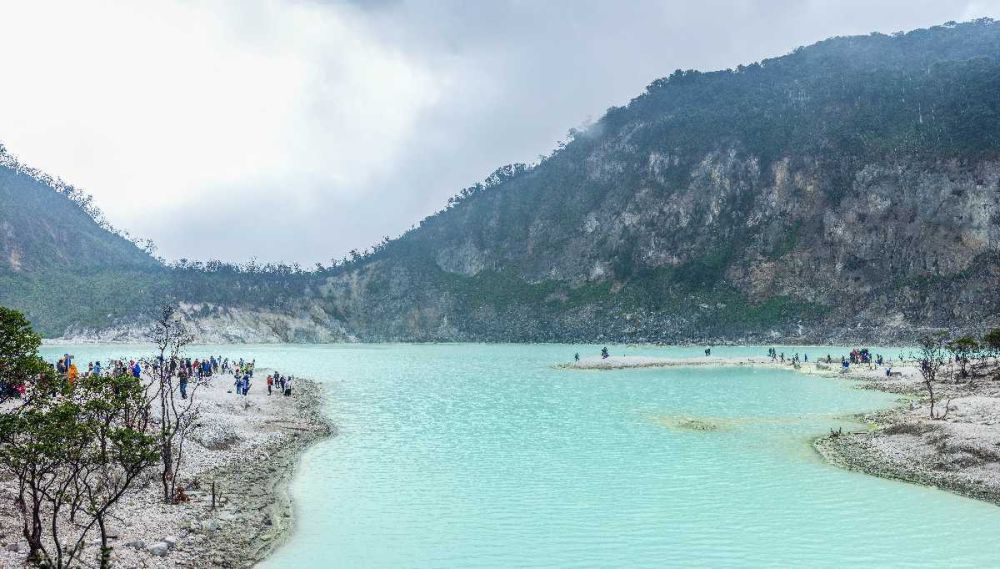

The city of Bandung, tucked away in the beautiful landscape of West Java, Indonesia, is home to one of the most captivating tourist attractions in the country - Kawah Putih, or the White Crater. Bandung itself was developed significantly during the Dutch colonial era, leading to its nickname "Parijs van Java," or the Paris of Java, for its European ambiance and charm.
Kawah Putih's history as a tourist spot has its roots in the early 20th century. The crater lake owes its existence to the Patuha volcano and is located approximately 50 kilometers south of Bandung. Its discovery dates back to the late 19th century when a German botanist, Dr. Franz Wilhelm Junghuhn, researched the area. The local legends warned of spirits guarding the mountain, which deterred most from venturing close. However, curious and undeterred, Junghuhn explored and ultimately unveiled Kawah Putih's stunning turquoise sulfurous lake, thereby recording it in the annals of history as a significant site.
After its discovery, Kawah Putih gradually became known among tourists and adventurers for its unique landscape and the distinct color of its water, which varies from bluish to whitish green, or even brown, depending on the concentration of sulfur and the temperature or the light condition.
For many years, Kawah Putih remained a hidden gem, only known to a few intrepid travelers and local residents. However, as Indonesia began fostering its international tourism in the late 20th century, the breathtaking beauty of Kawah Putih was recognized as a potential tourist hotspot. Significant investments were made to make the site more accessible, including the construction of better roads leading up to the crater and the establishment of visitor facilities.
In recent years, social media exposure has catapulted Kawah Putih to fame, as stunning photographs of the crater lake circulated on platforms like Instagram and Pinterest. The unique topography and the contrasting colors of the landscape have elevated Kawah Putih to a must-visit photographable location, attracting both domestic and international visitors.
The recent trend in Kawah Putih centers around sustainable tourism. Efforts are being made to ensure that tourism development does not disrupt the natural environment and the delicate ecosystem of the region. Visitors are encouraged to abide by ecological best practices, such as disposing of litter correctly and respecting wildlife.
Another emerging trend is the quest for authentic and immersive experiences. Tourists visiting Kawah Putih often combine their trips with cultural interactions in nearby villages, enjoying local cuisine, and engaging in traditional arts and crafts.
To accommodate the growing interest, the West Java government has taken steps to enhance the tourist experience by improving facilities and infrastructure. This includes the introduction of electric shuttle vehicles to reduce emissions and maintain the pristine condition of the environment around the crater.
Kawah Putih stands as a testament to Indonesia's abundant natural wonders and cultural wealth. With careful management and responsible tourism practices, it will continue to enchant visitors for generations to come. Whether you are a nature lover, a culture enthusiast, or just a curious traveler, Kawah Putih is a destination you would not want to miss when exploring the rich tapestry that is Indonesia.